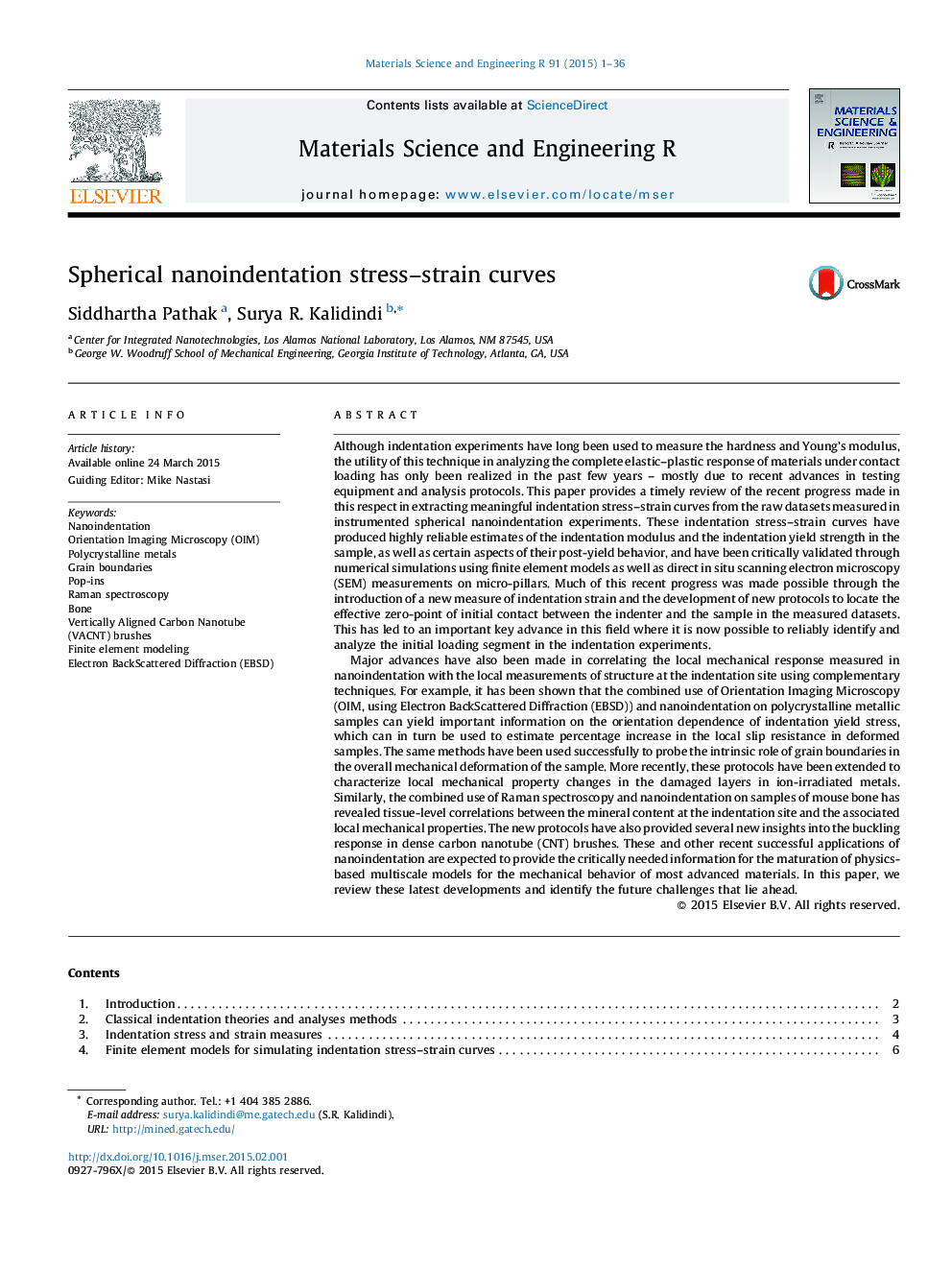| Article ID | Journal | Published Year | Pages | File Type |
|---|---|---|---|---|
| 1532323 | Materials Science and Engineering: R: Reports | 2015 | 36 Pages |
Abstract
Major advances have also been made in correlating the local mechanical response measured in nanoindentation with the local measurements of structure at the indentation site using complementary techniques. For example, it has been shown that the combined use of Orientation Imaging Microscopy (OIM, using Electron BackScattered Diffraction (EBSD)) and nanoindentation on polycrystalline metallic samples can yield important information on the orientation dependence of indentation yield stress, which can in turn be used to estimate percentage increase in the local slip resistance in deformed samples. The same methods have been used successfully to probe the intrinsic role of grain boundaries in the overall mechanical deformation of the sample. More recently, these protocols have been extended to characterize local mechanical property changes in the damaged layers in ion-irradiated metals. Similarly, the combined use of Raman spectroscopy and nanoindentation on samples of mouse bone has revealed tissue-level correlations between the mineral content at the indentation site and the associated local mechanical properties. The new protocols have also provided several new insights into the buckling response in dense carbon nanotube (CNT) brushes. These and other recent successful applications of nanoindentation are expected to provide the critically needed information for the maturation of physics-based multiscale models for the mechanical behavior of most advanced materials. In this paper, we review these latest developments and identify the future challenges that lie ahead.
Keywords
Related Topics
Physical Sciences and Engineering
Materials Science
Electronic, Optical and Magnetic Materials
Authors
Siddhartha Pathak, Surya R. Kalidindi,
